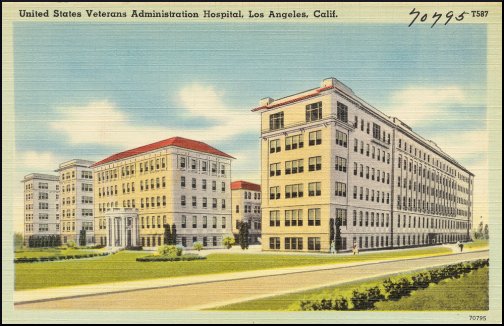
The Department of Veterans Affairs aims to end veteran homelessness by 2015, and one of the tools to do this job is the voucher system administered by the Veterans Affairs Supporting Housing Program (VASH) and Housing and Urban Development (HUD). California journalist Debra Gruszecki writes:
Riverside County Supervisors Jeff Stone and John Tavaglione challenged housing staff though a ‘Valor Initiative’ to find permanent homes for 135 veterans within 100 days… ‘We ended up housing 140,’ said Carrie Harmon, a specialist with the Housing Authority of Riverside County… Within the pool of 140 veterans, 110 are in apartments or single-family homes. The rest are in permanent supportive housing centers.
In and around Los Angeles, landlords are collecting $4.2 million per year in rental subsidies. The tenants themselves pay reduced amounts. For instance, a Navy vet featured in Gruszecki’s story is only liable for $286 of his own rent per month. A military aircraft mechanic, he had intended to make a career of it, but suffered a knee injury and combat PTSD during a tour of duty in Iraq.
Back in the States, he lost the woman he had been in a relationship with, and was prevented from contacting his kids. He met up with street drugs, and lost the car he had been living in. After attaining sobriety and maintaining it for seven months, he was chosen by the program for housing and help with the rent.
But it’s not just about money. Gruszecki says the program is:
[…] in partnership with agencies that include US Vets, Roy’s Desert Resource Center, Jewish Family Services, Coachella Valley Rescue Mission, Department of Mental Health, Valley Restart Center, Lighthouse Social Service Centers and the Southern California Veterans Alliance…
One result of this social-service backup system is that, in case of problems, a landlord has someone besides a possibly unstable tenant to deal with.
For better or worse, California is a thought leader. Things start there and spread. What happens in California is important because it’s huge, with around 16,500 homeless veterans, about half of them in the southern part of the state where Los Angeles is. Over the years there has been fierce debate over the land and facilities in the middle of LA, that are supposed to belong to America’s veterans.
One of the contested issues has been the fate of some 60-year-old buildings belonging to the Sepulveda Ambulatory Care Center, that were damaged in a 1994 earthquake and closed down. Christina Villacorte writes:
Over the last decade, several community organizations, neighborhood councils, and government officials opposed the project, including Rep. Brad Sherman, D-Sherman Oaks, because developers did not initially plan to offer the units exclusively to homeless veterans, and were also open to having tenants that were not yet clean or sober…
The 400-square-foot units are designated for veterans who had lived on the streets and tried to deal with post-traumatic stress disorder and other injuries by abusing drugs or alcohol, but have since embraced sobriety.
So the “housing first” principle lost out in this project. Anyway, the properties have been rehabilitated by the nonprofit housing developer A Community of Friends and another nonprofit, New Directions for Veterans. The complex, which opened a few weeks ago, is described as a “permanent supportive housing facility for formerly homeless, disabled and low-income military veterans.” Residents pay no more than 30% of their income, or up to $435 monthly, and the tax funds allotted to veterans take care of the rest.
The development includes 147 studio apartments, each of which cost $320,000 to create. It seems like a lot of money for 400 square feet, which is, like, 20′ by 20′. Many homes in Los Angeles have closets bigger than that. Of course there are also common areas, the price of which must be averaged in, but it still seems like quite a price tag. There are places where $320,000 could buy a decent house with a yard and garage. Maybe the necessity for earthquake-proofing explains the extraordinary cost per unit.
(To be continued…)
Reactions?
Source: “Homeless Veterans: 140 housed in 100 days,” pe.com, 09/25/13
Source: “Once homeless vets now have a place to call their own,” DailyNews.com, 09/27/13
Image by Boston Public Library.


